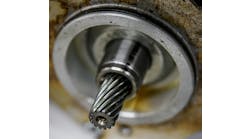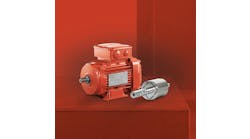Dave Perkon is technical editor for Control Design. He has engineered and managed automation projects for Fortune 500 companies in the medical, automotive, semiconductor, defense and solar industries.
The stepper and servo motor each has its advantages and disadvantages. Both integrate well with a variety of control systems and provide high-performance linear and rotary motion capabilities. While the motor technology and control is well developed and documented, the selection of each depends on the application.
Stepper: low speed and low cost
The stepper motor's good accuracy, reliability and high-torque capabilities along with open-loop capability and low cost make it a good choice in many applications. The accuracy is based on the noncumulative error of a motor step, and its simple and brushless design provides excellent reliability.
The stepper works well in starting, stopping and reversing applications due to fast motor response. It also closely follows the digital signals from the stepper motor drive. This is the main reason it can be run open-loop. The stepper can also be easier to install and control with no encoder or the related wiring and less programming needed.
It’s also stated often that a stepper motor has full torque at zero speed—at standstill—making it very stable when stopped. This also means that steppers run well at slow speeds—very slow speeds—such as crystal-growing speeds. To run at low speed, a microstepping drive is needed or each rotational step can be quite coarse. Fortunately microstepping drives are the norm today, but be sure to calculate the rotational angle or linear distance of each microstep and configure the drive accordingly. Typically the more microsteps, the better, but too much can reduce the motor torque.
Also read: Harry Major Machine modern gantry improves plant uptime
Steppers’ low-speed torque comes at a disadvantage—they use full current, whether stopped or running. Stepper drives have a feature to reduce the current when stopped that should be specified and configured, where possible, since the stepper motor spends much of its time at zero speed. However, while running, the stepper does not typically have torque control—there's no force-control capability. It only operates at full torque.
As the stepper motor's rotational speed increases, torque does drop quickly, so check each motor's torque specifications and carefully convert the speed to a common engineering unit such as rpm. The stepper motor vendors use a wide variety of other speed units such as revolutions/second, half-steps/second and steps/second, so make sure you are up to speed.
There’s no need for closed-loop feedback if the stepper is sized properly. Open-loop does work well, but the stepper motor must also be run at an acceleration, deceleration and velocity within the motor's capabilities. It also can’t run into anything. With acceleration too fast, motor load too high or the load running into something, the motor will likely stop and not reach the programmed end position.
In applications when the occasional out-of-position fault is easy to recover from or will not adversely affect the machine, open-loop control works great. This is often the case for OEM equipment where the benefits of accurate positioning and low cost are needed.
Sometimes the positional accuracy needs to be confirmed, so encoders can be added to a stepper motor. Although some stepper drives can close the loop using an encoder, it's not always the type of closed-loop control found on servos where the position is updated, typically by the servo drive, during the move. Many closed-loop stepper applications require the user to capture the start and end positions and confirm the position or distance, programmatically, after the move.
Dynamic servo performance
As the positional requirement, motion profile and speed of the application increases, a servo motor becomes the better choice. The servo motor lays claim to the high-speed, high-acceleration-rate and high-deceleration-rate applications. Although steppers accelerate well, the servo handles the dynamic applications better. They have high intermittent, peak torque and excellent velocity control. This higher peak torque and higher speed provide the performance advantage.
The servo only draws the current needed to maintain position, velocity or torque set points, depending on the mode it is running. Sometimes the current needed can be two or three times the rated torque. This extra torque is available intermittently. This is a big difference between the stepper and the servo.
Servos always have feedback, usually an encoder or resolver—the feedback control loop. This required feedback helps with position and velocity application performance. The closed-loop control along with the servo motor's design creates a very flat speed torque curve over its rated speed range. The design does add cost and complexity, but you get what you pay for with improved performance.
The closed-loop control does require tuning of the servo drive and motor package. Although most vendors claim self-tuning or set the parameters to default values, often tuning of the servo motor to meet positional requirements, such as snapping to position quickly, will be required. This can be time-consuming, depending on the application.
The final consideration is that there’s much overlap of stepper and servo motor applications and even servo-like steppers. Use the overlap to your advantage, and design a system that just uses one of the technologies. Keep it simpler with a single, common motion platform. A properly designed, slightly larger stepper motor or an overdesigned servo motor will both work.
Homepage image courtesy of dream designs at FreeDigitalPhotos.net






